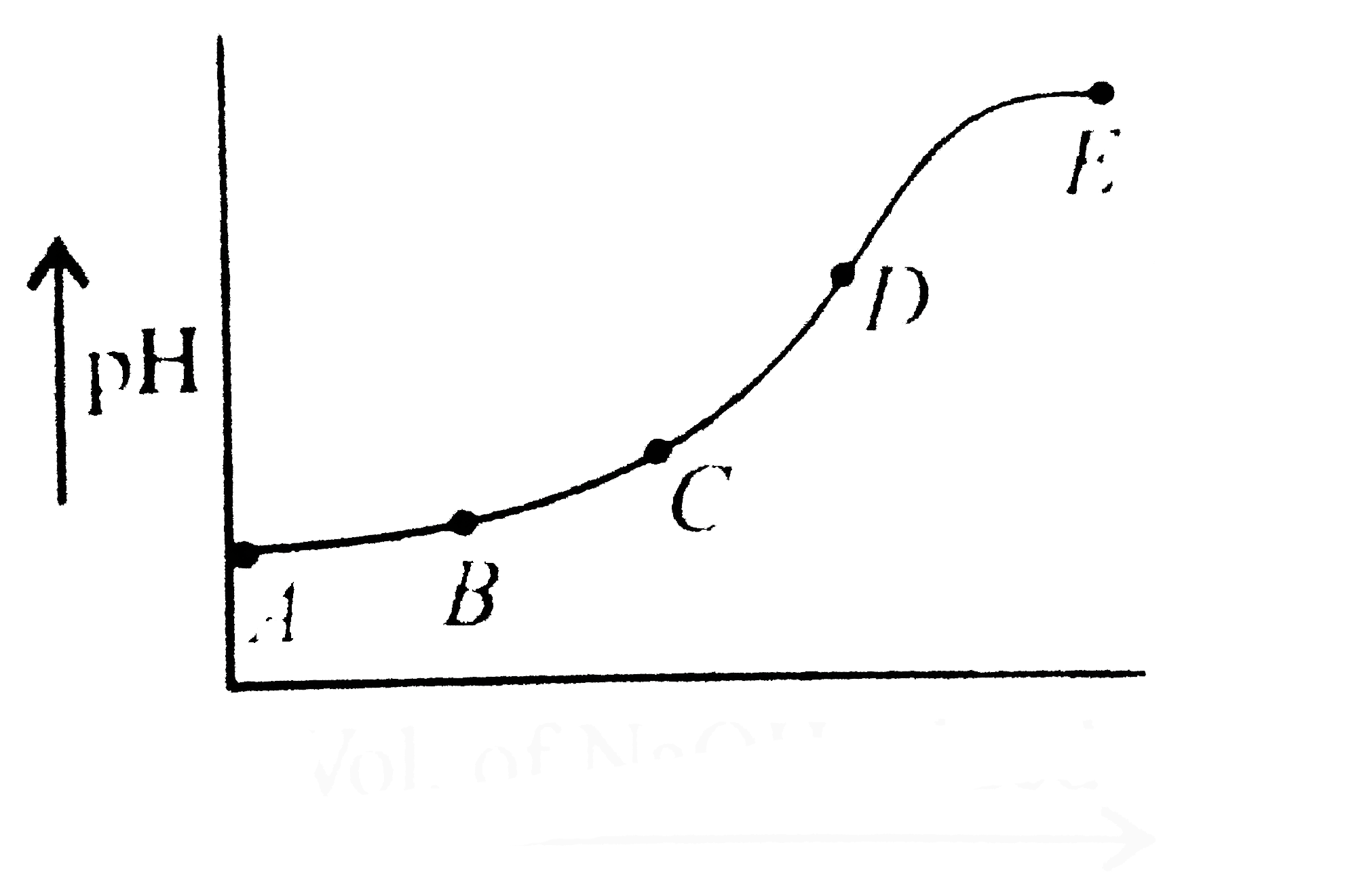In the titration of weak acid against strong base match the pH of the solution at different stage of titration.


The correct Answer is:A→r;B→s;C→p;D→q
Topper's Solved these Questions
- IONIC EQUILIBRIUMBOOK - NARAYNACHAPTER - IONIC EQUILIBRIUMEXERCISE - Level-VI (H.W)
35 Videos
- IONIC EQUILIBRIUMBOOK - NARAYNACHAPTER - IONIC EQUILIBRIUMEXERCISE - Level-II (H.W)
51 Videos
- HYDROGEN & ITS COMPOUNDSBOOK - NARAYNACHAPTER - HYDROGEN & ITS COMPOUNDSEXERCISE - LEVEL-4
21 Videos
- PERIODIC TABLE BOOK - NARAYNACHAPTER - PERIODIC TABLE EXERCISE - All Questions
568 Videos
Similar Questions
During the titration of a weak diprotic acid (H2A) against a strong base (NaOH), the pH of the solution half-way to the first equivalent point and that at the first equivalent point are given respectively by:
View SolutionDuring the titration of a weak diprotic acid (H2A) against a strong base (NaOH), the pH of the solution half-way to the first equivalent point and that at the first equivalent point are given respectively by:
View Solution
Knowledge Check
In the titration of a weak acid aginst a strong base, at the half-equivalence point (half. Neutralisation )
ApH=12pKaBpH=pKaCpH=2pKaDNone of theseThe following curve shows the change of pH during the course of titration of weak acid HA with a strong base. At which point in the titration curve is the concentration of acid equal to that of its conjugate base.
 APoint BBPoint CCPoint DDPoint E
APoint BBPoint CCPoint DDPoint EStatement-1:Phenolphathalein can be used as indicator in the titration of weak acid with NaOH.
Statement-2 :Near the end point in the titration of weak acid with NaOH, the pH of the solutions is alkaline due to hydrolysis of anion.AStatement-1 is True, Statement-2 is True, Statement-2 is a correct explanation for Statement-1BStatement-1 is True, Statement-2 is True, Statement-2 is NOT a correct explanation for Statement-1CStatement-1 is False, Statement-2 is True.DStatement-1 is True, Statement-2 is False.
The following curve shows the change of pH during the course of titration of weak acid HA with a strong base. At which point in the titration curve is the concentration of acid equal to that of its conjugate base.

View SolutionStatement-1:Phenolphathalein can be used as indicator in the titration of weak acid with NaOH.
Statement-2 :Near the end point in the titration of weak acid with NaOH, the pH of the solutions is alkaline due to hydrolysis of anion.
View SolutionWhich of the following pH curve represent the titration of weak acid and strong base (dotted line show equivalence point)?
View SolutionWhich of the following pH curve represent the titration of weak acid and strong base (dotted line show equivalence point)?
View SolutionThe best indicator for detection of end point in titration of a weak acid and a strong base is
NB Figures in the brackets show the pH range of the indicator .
View Solution
